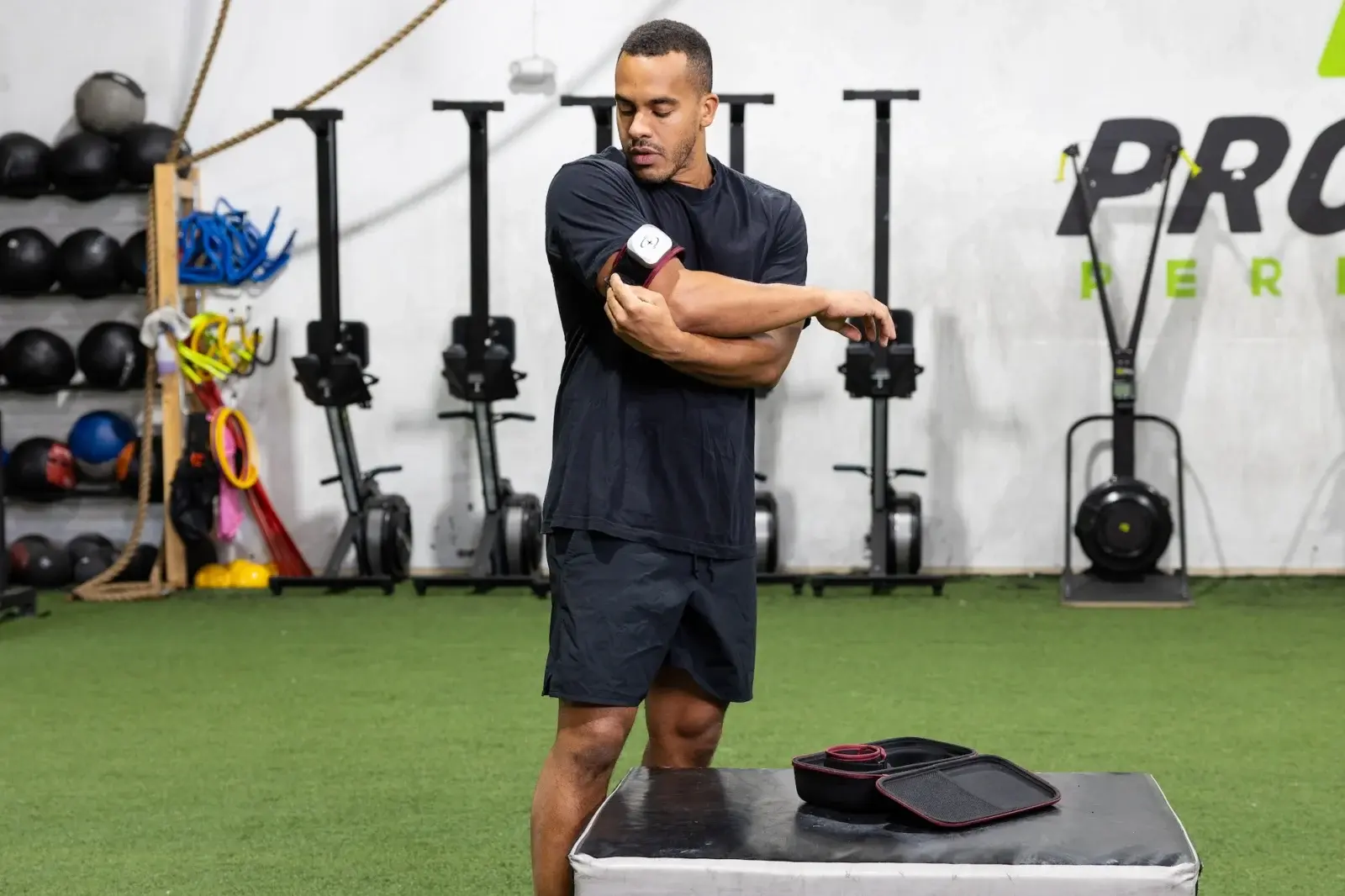Plyometric training is a form of high-intensity exercise designed to develop explosive power through rapid, stretch-shortening muscle actions. It typically involves quick, powerful movements like jumping, bounding, and throwing — exercises that help athletes build speed, force, and responsiveness.
READ: Preventing Common Baseball & Softball Injuries with Physical Therapy
The foundation of plyometrics lies in the stretch-shortening cycle: a muscle is rapidly lengthened (eccentric phase), immediately followed by a quick contraction (concentric phase). This process trains the body to produce force quickly and efficiently — a key component in almost every athletic movement.
Common plyometric drills include box jumps, medicine ball slams, lateral bounds, and jump squats. These exercises aren't just about jumping higher — they're about improving coordination, muscle recruitment, and power transfer from the ground up.

Why Baseball Players Benefit from Plyometrics
Baseball is a game of explosive movement — quick sprints, sudden changes in direction, powerful throws, and dynamic swings. Plyometric training directly enhances these skills by developing the fast-twitch muscle fibers and coordination needed to generate high force in a short amount of time.
For hitters, plyometric exercises improve rotational power and core control, translating to harder swings and greater exit velocity. For pitchers, they help generate force from the ground up, supporting velocity while reducing strain on the arm through better energy transfer.
Position players benefit from faster first steps, sharper cuts, and quicker throws — all crucial in the fast-paced moments that define the game.
READ: How Physical Therapy Enhances Bat Speed and Swing Mechanics
Incorporating plyos into a baseball player's training program improves overall athleticism, enhances reaction time, and promotes better neuromuscular control. At Kinetic in Delafield, we use plyometrics not just for performance, but for injury prevention and long-term development as well.
Best Practices for Safe, Effective Plyometric Training
While plyometric training offers big performance gains, it also places high demands on the body. That’s why proper technique, progression, and programming are essential — especially for youth and developing athletes.
Start with solid movement foundations. Before adding intensity, athletes should demonstrate good balance, landing mechanics, and core control. Poor form in jumping or landing can lead to injury or reinforce bad habits.
Progress gradually. Not all plyos are created equal. Double-leg jumps are more forgiving than single-leg bounds or depth drops. Coaches at Kinetic guide athletes through progressions that match their readiness, not just their age or sport.
Balance with strength training. Plyometrics are most effective when paired with a solid strength base. Strong legs, hips, and core muscles support powerful movement and absorb impact better.
Prioritize recovery. High-intensity work requires rest. Plyometric drills should be dosed carefully within a weekly training plan — not piled on without purpose.
At Kinetic, our coaches build personalized programs that incorporate plyos in the right dose and context — helping baseball players in Delafield improve explosiveness without sacrificing safety.
How Kinetic Incorporates Plyos Into Baseball Performance Plans
At Kinetic, we don’t take a one-size-fits-all approach. Our performance programs for baseball players are built around each athlete’s age, position, injury history, and season (off-season, pre-season, or in-season). Plyometric training is one piece of a broader system designed for total athletic development.
For younger athletes, we introduce foundational plyo drills that focus on coordination, landing mechanics, and body control. As players mature, we add more complex and powerful movements — always in conjunction with strength work to support safe progression.
We tailor plyo selection based on position-specific needs:
- Pitchers focus on hip-to-shoulder separation, rotational power, and lower body explosiveness.
- Infielders and outfielders benefit from lateral plyos, reaction drills, and acceleration-based movements.
- Hitters integrate rotational medicine ball work to enhance bat speed and transfer force through the core.
Most importantly, we keep the work relevant to baseball. Our coaches link plyometric movements to in-game actions so athletes understand how each drill builds real-world performance.
Getting Started with Plyometric Training in Delafield
If you’re a baseball player in Delafield looking to boost your speed, power, and game-time performance, plyometric training at Kinetic is a smart next step. But it’s not just about doing jumps — it’s about doing the right jumps, the right way, for your game.
We begin every training plan with a comprehensive performance assessment. This helps us understand your strengths, identify movement gaps, and determine the right starting point for explosive training.
From there, we build a program tailored to your goals — whether you’re aiming to increase pitching velocity, hit harder, or improve agility on the bases. You’ll train with expert coaches who know how to push performance safely and effectively.
Ready to build next-level power? Contact Kinetic today to schedule your assessment and start training like the athlete you are.
